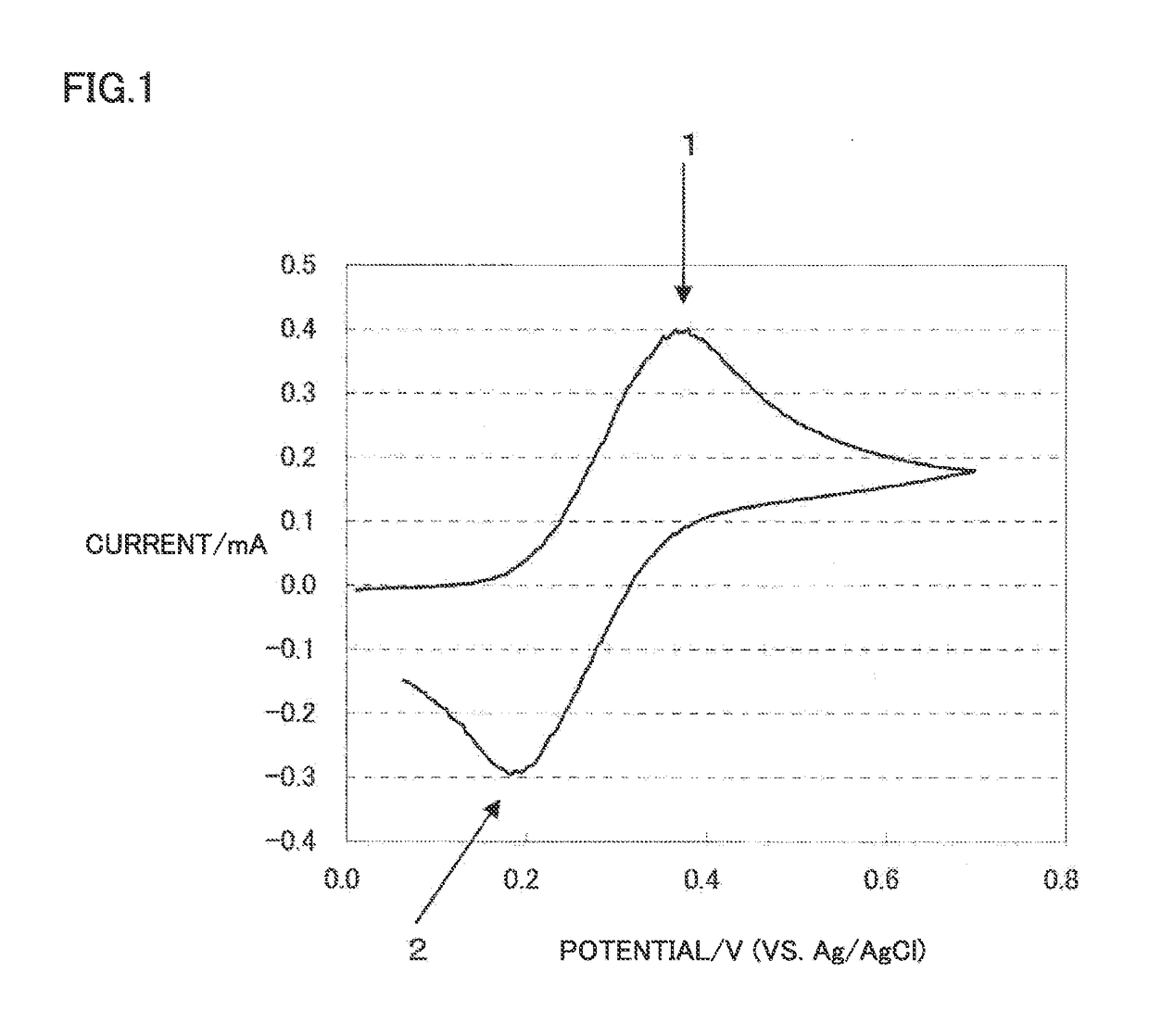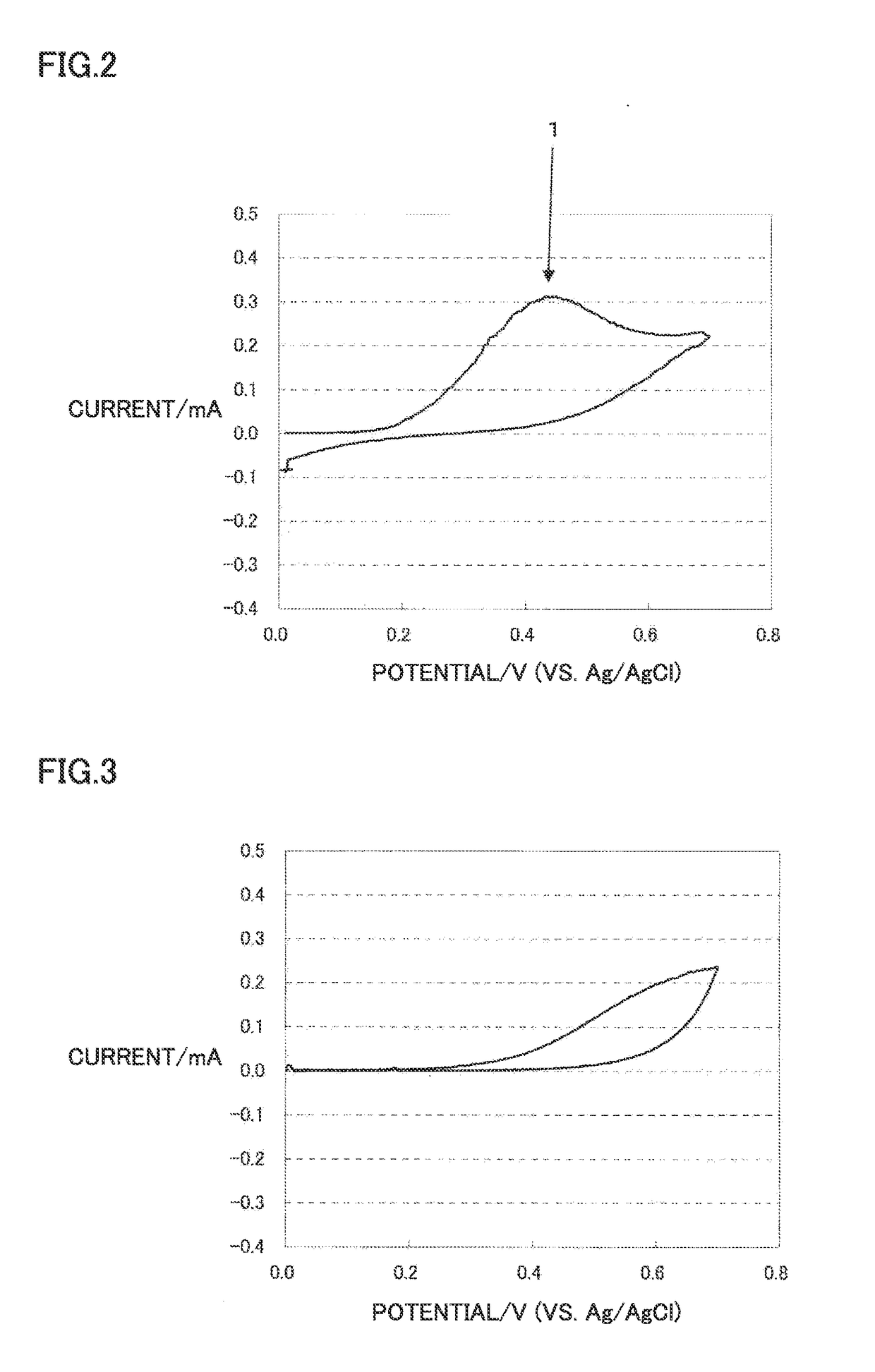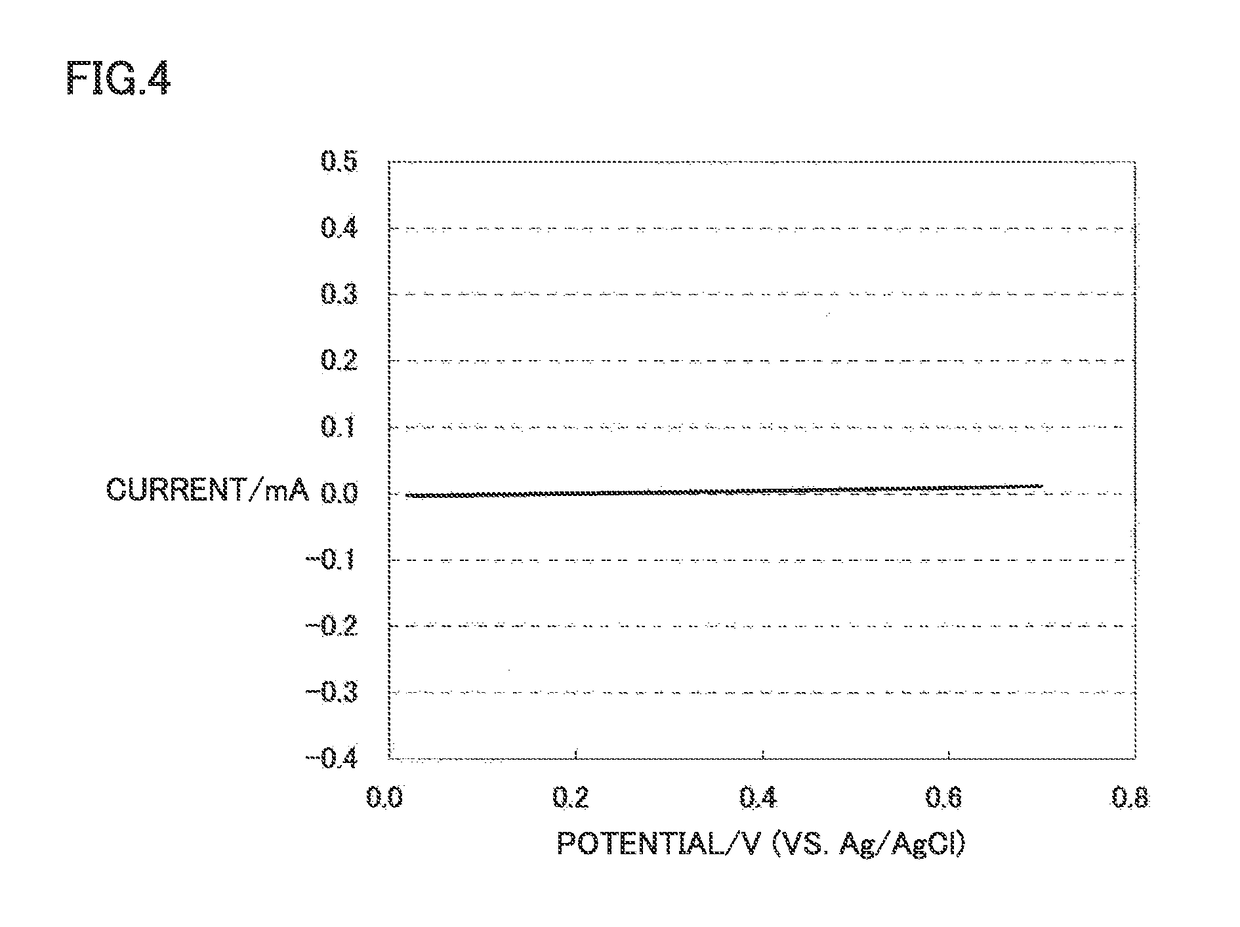Thin film-laminated film
a thin film, laminated film technology, applied in the direction of metallic material coating process, synthetic resin layered products, other medical devices, etc., can solve the problems of nickel elution, narrow blood sugar level difference of each measurement with a blood sugar level sensor, and precise film thickness control, so as to achieve stable electrical signal, high chemical stability, and low cost
- Summary
- Abstract
- Description
- Claims
- Application Information
AI Technical Summary
Benefits of technology
Problems solved by technology
Method used
Image
Examples
example 1
[0081]As a plastic film, a biaxially-oriented polyethylene terephthalate-based film having a thickness of 250 μm (E5001, manufactured by TOYOBO CO., LTD.) was used. The plastic film had a total light transmittance of 88%, and a reflectance of 4.5%.
[0082]A roll of the biaxially-oriented polyethylene terephthalate-based film was exposed to vacuum. In a vacuum chamber, a rewind treatment was performed under a pressure of 2×10−3 Pa, and an exposure time of 20 minutes. In addition, a setting temperature of a center roll was 40° C.
[0083]Then, a titanium thin film was deposited on one side of the biaxially-oriented polyester film by using a titanium target. On this occasion, an ultimate pressure in the vacuum chamber before sputtering was confirmed to be 1×10−4 Pa (ultimate vacuum), and then sputtering was performed. A condition of the sputtering was application of DC electricity of 3 W / square. A deposition was performed by a DC magnetron sputtering method under a 0.4 Pa atmosphere with Ar...
example 2
[0086]Example 2 was carried out in the same manner as in Example 1 except that a titanium thin film having a film thickness of 100 nm was laminated, and a carbon thin film having a film thickness of 0.25 nm was further laminated on the titanium thin film. A peak oxidation current and a peak reduction current were observed at preferable potentials. Thus, the resulting product can preferably be used as an electrode of a strip for a blood sugar level sensor. In addition, there was no change in resistance value, and no dissolution from the slit portion after application of the reagent layer. Thus, the titanium-carbon thin film-laminated film has high stability, and can preferably be used as an electrode of a strip for a blood sugar level sensor.
example 3
[0087]Example 3 was carried out in the same manner as in Example 1 except that a titanium thin film having a film thickness of 25 nm was laminated, and a carbon thin film having a film thickness of 0.5 nm was further laminated on the titanium thin film. As shown in Table 1, a peak oxidation current and a peak reduction current were observed at preferable potentials. Thus, the resulting product can preferably be used as an electrode of a strip for a blood sugar level sensor. In addition, there was no change in resistance value, and no dissolution from the slit portion after application of the reagent layer. Thus, the titanium-carbon thin film-laminated film has high stability, and can preferably be used as an electrode of a strip for a blood sugar level sensor.
PUM
| Property | Measurement | Unit |
|---|---|---|
| Thickness | aaaaa | aaaaa |
| Thickness | aaaaa | aaaaa |
| Electric potential / voltage | aaaaa | aaaaa |
Abstract
Description
Claims
Application Information
 Login to View More
Login to View More - R&D
- Intellectual Property
- Life Sciences
- Materials
- Tech Scout
- Unparalleled Data Quality
- Higher Quality Content
- 60% Fewer Hallucinations
Browse by: Latest US Patents, China's latest patents, Technical Efficacy Thesaurus, Application Domain, Technology Topic, Popular Technical Reports.
© 2025 PatSnap. All rights reserved.Legal|Privacy policy|Modern Slavery Act Transparency Statement|Sitemap|About US| Contact US: help@patsnap.com



